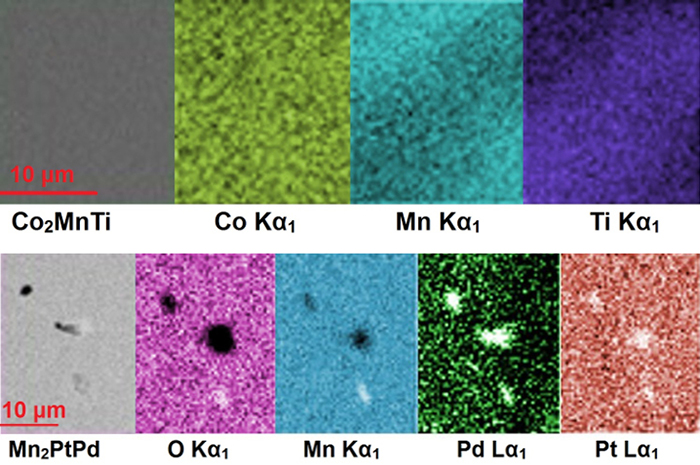Magnetic materials could now be developed faster than ever before, thanks to computer modelling techniques used to build two new types of magnets, atom-by-atom.
By using software to predict atom energy, stability, and other interactions inside a computer model, the researchers whittled down 236,115 potentially promising compounds to a shortlist of just 14 very quickly.
That's a huge improvement over the traditional trial-and-error methods currently used by scientists, according to the team from Duke University, and could lead to the rapid discovery of new magnets for all kinds of purposes, from medical devices to car engines.
"Predicting magnets is a heck of a job and their discovery is very rare," says one of the researchers, Stefano Curtarolo from the Centre for Materials Genomics at Duke. "Even with our screening process, it took years of work to synthesise our predictions."
 A microscopic look at the two new materials. Credit: Duke University
A microscopic look at the two new materials. Credit: Duke University
With only about 5 percent of known inorganic compounds showing even a hint of magnetism, scientists are keen to develop new materials in the lab to supplement them.
This research focussed on a family of materials called Heusler alloys, composed of atoms from three different elements arranged in one of three distinct structures – giving 236,115 possible combinations in all.
By using computer models of potential prototypes – which calculated how atoms might interact, and the energy that would be required – the list was quickly cut down.
The models were also able to look for magnetic moments in each compound, or how they would react to external magnetic fields.
Finally, scientists were left with 14 candidates for new materials that they could then work on synthesising in the lab: of four that were chosen, two were eventually developed over the course of several years.
Although the synthesising process is still relatively slow, working on a handful of potential compounds is easier than trying to find the right combination in a group of 236,115, which is why the computer modelling technique could be so useful.
"There can be all types of constraints or special conditions that are required for a material to stabilise," explains one of the team, Corey Oses. "But choosing from 14 is a lot better than 200,000."
The first new material, Co2MnTi, combined cobalt, manganese, and titanium, and researchers were able to accurately predict the new magnet's properties, including the Curie temperature (the point when the material loses its magnetism).
That temperature turned out to be 938 Kelvin (1,228 degrees Fahrenheit), very close to the predicted 940 Kelvin (1,232 degrees Fahrenheit), making the material potentially useful in many commercial applications.
The second magnetic material, Mn2PtPd, mixes manganese, platinum, and palladium, and again the computer predictions about its properties proved to be very accurate.
Mn2PtPd was found to be an antiferromagnet, where electrons are evenly divided in their alignments – meaning the material has no internal magnetic moment of its own, but its electrons are responsive to external magnetic fields.
This material could be used in hard drives, Random Access Memory (RAM), and magnetic field sensing devices, the scientists say, but the method used to find these materials is what's most important.
"It doesn't really matter if either of these new magnets proves useful in the future," says Curtarolo. "The ability to rapidly predict their existence is a major coup and will be invaluable to materials scientists moving forward."
The research has been published in Science Advances.
